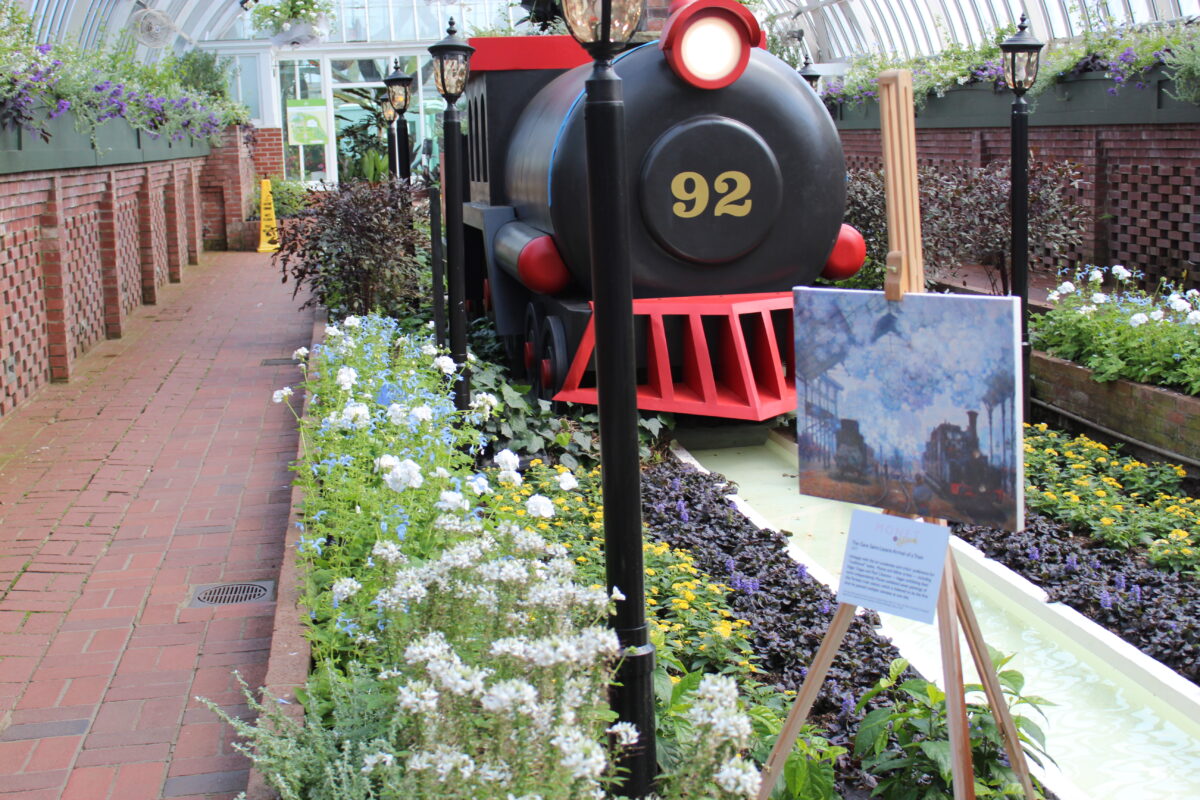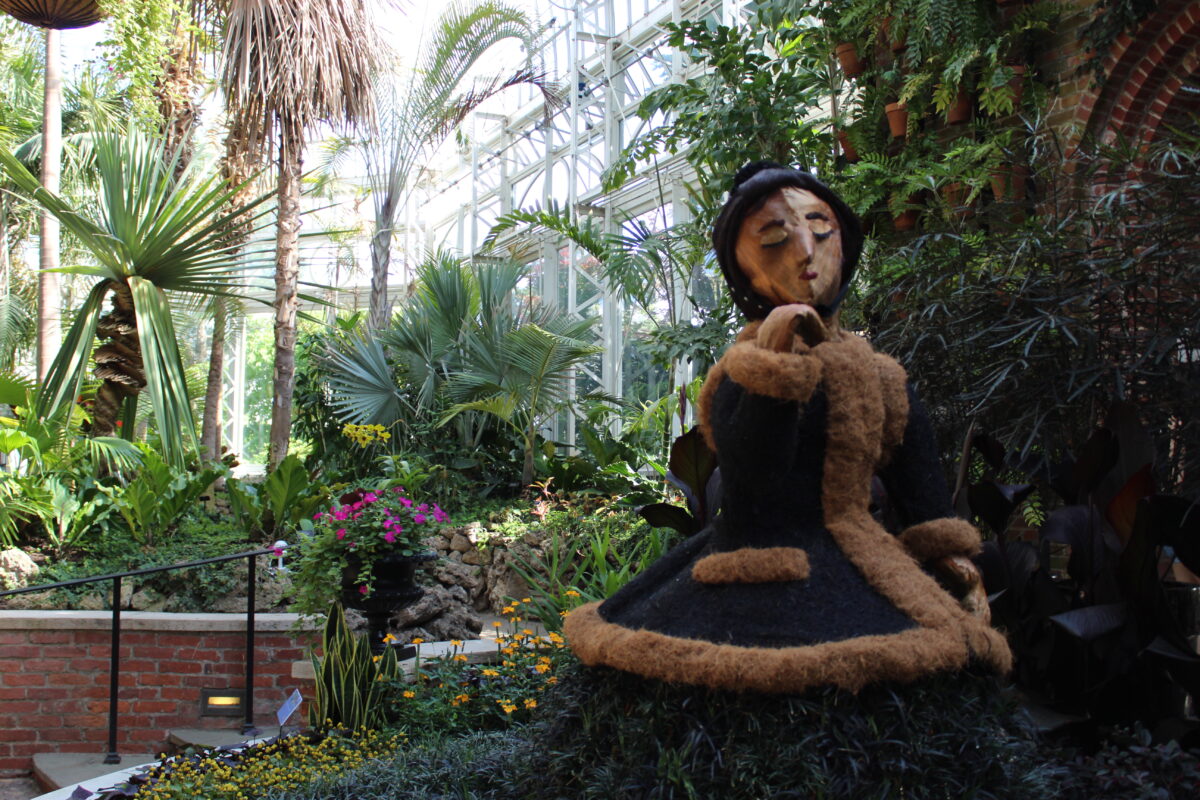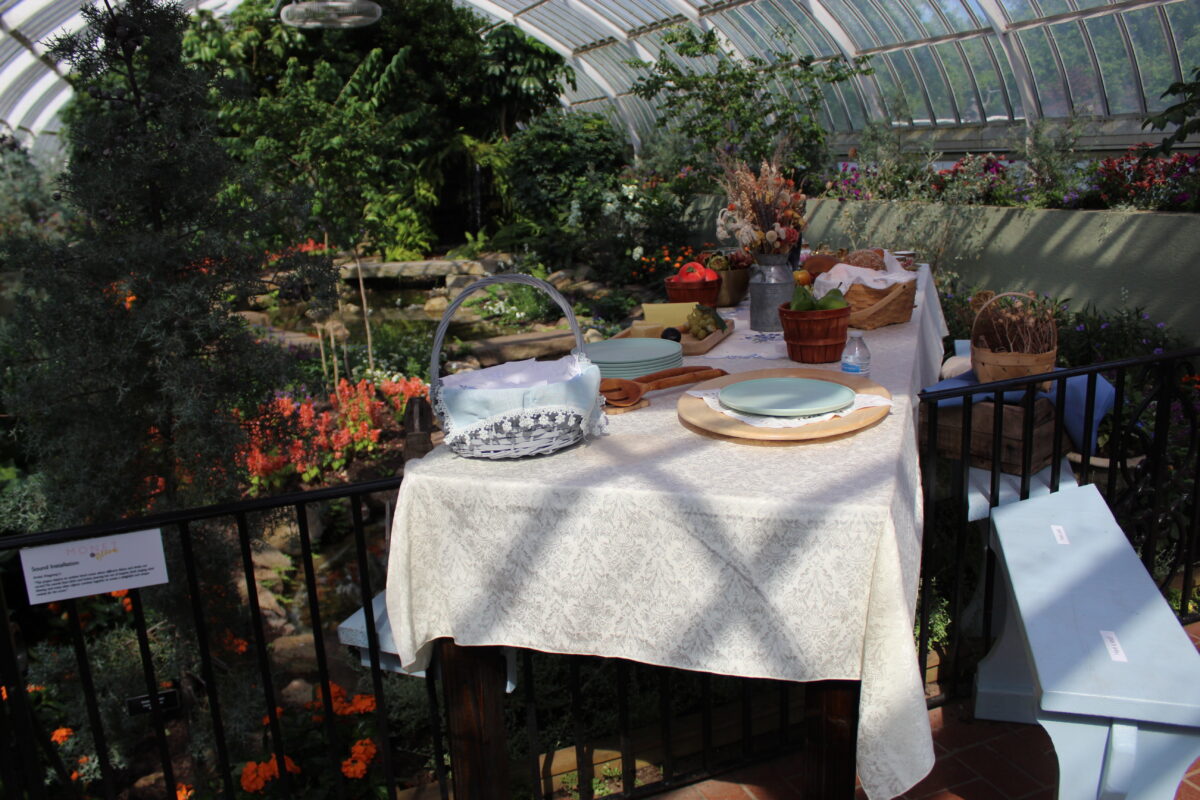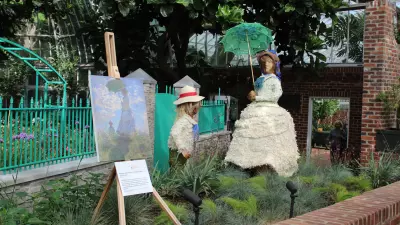Claude Monet is an ageless icon of the art world, best known for breathtaking and idyllic landscape paintings that have captivated people for generations.

The French Impressionist painted while enjoying the outdoors that inspired his work — spending years designing his home garden.
Monet’s gardens in northern France were lush, with weeping willow, rhododendron, cherry trees and vibrant perennials.
This summer, visitors to Western Pennsylvania’s Phipps Conservatory and Botanical Gardens can enjoy a landscape inspired by Monet’s artwork.

The show, designed by Associate Director of Exhibits Jordyn Melino to bring three-dimensional life to the French painter’s works, will run through to Sept 25.
“Impressionism seems to be a good fit with the gardens, particularly because a lot of the painters started painting outside and appreciating the landscape around them,” Melino said. “That resonates with us and what we do. Monet was kind of the next obvious choice.”
The exhibit was inspired by the popularity of Phipps’ 2019 show, Van Gogh in Bloom, bringing the Dutch painter’s work to life through plants.
This time, Monet’s dreamy floral scenes are recreated with botanical displays, such as “Water Lilies,” which is made into a vertical mural in the Welcome Center with lobelia, begonias and other plants. More than 130 varieties were used in the show, which took more than a year to plan.

“Woman in a Green Dress” is a green and black striped topiary in Palm Court, and “Studio Boat” floats in the Victoria Room pond surrounded by beds of impatiens and begonias.
As with the 2019 show, visitors can walk through Phipps and view an array of plants based on the life of Monet. Replicas of many of his ionic works are interspersed throughout the exhibits: “Arrival of a Train,” “Woman in a Green Dress,” and “Water Lilies,” among them.
The East Room features an exhibit of Monet’s “luncheon under the canopy,” with a display to bring the painting to life, similar to the picnics that Monet once hosted in his garden, where he grew much of his food.
Visitors can see the “Woman with a Parasol” in the South Conservatory.

Some of the hallmark plants from his gardens are Agapanthus “Ever White,” Begonia-tuberhybrida “Nonstop Sunset,” Ficus pumila “Varigata,” and Mandevilla hybrid “Sun Parasol Apricot.”
Unlike Monet’s garden, these plants didn’t come from Europe: Most were ordered from growers in the U.S.
Throughout the exhibits, visitors can view shaped forms made from plant material that bring Monet’s paintings to life. Exhibit associate Mary Lou Linton-Morningstar created the topiaries.
For this exhibit, Carnegie Mellon University students also created sounds to augment the visuals. Exhibit coordinators visited students in an undergraduate experimental sound class and challenged them to think about what they could develop to accompany the show.

About 30 staff members worked to create the five-month show. Because of the length of the show, it may look different toward the end than it did at the start.
“It’s incredible to watch it evolve,” Melino said.
Phipps is open from 9:30 a.m. to 5 p.m. daily, and until 10 p.m. on Fridays. Timed tickets must be reserved in advance.
All rooms, with the exception of the Stove Room, located in the west wing, are accessible by wheelchair. Guests who need accommodations can grab a manual wheelchair at the admissions area free of charge.







